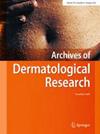摘要
不孕症是一种疾病,其特征是在定期和无保护性活动 12 个月后仍无法实现临床妊娠。不孕症影响着全球 8-12% 的人口,随着近年来微生物研究的不断进步,多种微生物可能与不孕症的发病有关。因此,我们采用了双样本 MR 分析法来研究皮肤微生物与不孕症之间的关联。我们使用预处理过的暴露数据来关联不孕症指标(女性不孕症,与无排卵有关;女性不孕症,宫颈性不孕症、阴道性不孕症、其他不孕症或原因不明;女性不孕症,输卵管源性不孕症;ED;在此基础上,对阳性结果进行了水平多向性分析和异质性分析。最后,进行了 Steiger 检验,以确认不存在反向因果关系。本研究使用的数据来自已发表的 GWAS 数据集,其中皮肤微生物群来自 Moitinho-Silva 等人的研究,而暴露来自芬兰人的研究。在这项研究中,我们通过对两个样本进行磁共振分析,发现乳酸菌属、梭状芽孢杆菌属、假单胞菌属和毛霉菌属与女性不孕和无排卵之间存在正向因果关系。Enhydrobacteria 和 Betaproteobacteria 与女性不孕和无排卵呈负相关。乳酸杆菌和碱性蛋白菌与女性不孕症、宫颈性不孕症、阴道性不孕症、其他不孕症或不明原因的不孕症呈正相关。嗜血杆菌与女性不孕症、宫颈性不孕症、阴道性不孕症、其他不孕症或不明原因之间存在负因果关系。变形杆菌与女性不孕症和输卵管起源呈正相关。类杆菌与女性不孕症和输卵管起源呈负相关。罗杆菌科、梭状芽孢杆菌科和黄杆菌科与男性不育呈负相关。棒状杆菌与 ED 呈正因果关系,微球菌与 ED 呈负因果关系。我们的研究揭示了皮肤微生物群与不育症之间的因果关系,为将皮肤微生物群纳入不育症的预防和治疗提供了理论依据。据我们所知,我们的研究是首个探讨皮肤微生物群与不孕不育之间潜在因果关系的 MR 分析。在此基础上,我们提出了皮肤微生物导致不孕症的合理假设,并提出了可能的机制。我们的研究有助于临床不孕症的预防和治疗。Infertility is a disorder characterized by the inability to achieve a clinical pregnancy after 12 months of regular and unprotected sexual activity. Affecting 8–12% of the global population, with the continuous progress of microbial research in recent years, a variety of microorganisms may be associated with the onset of infertility. We therefore used a two-sample MR Analysis to investigate the association between skin microbes and infertility. we used preprocessed exposure data to correlate infertility measures (infertility in women, associated with anovulation; Female infertility, cervical infertility, vaginal infertility, other infertility or unknown causes; Female infertility, fallopian tube origin; ED; Based on this, the positive results were subjected to horizontal pleiotropy analysis and heterogeneity analysis. Finally, Steiger test was performed to confirm the absence of reverse causality. The data used in this study were obtained from the published GWAS data sets. skin microbiota from the study conducted by Moitinho-Silva et al., and the exposure from the Finn. In this study, we found a positive causal association between Lactobacillales, Clostridiales, Pseudomonadales, and Moraxellaceae and female infertility and anovulation by MR Analysis of two samples. Enhydrobacter, Betaproteobacteria have a negative causal association with female infertility and anovulation. Lactobacillales and Alphaproteobacteria had positive causal association with female infertility, cervical infertility, vaginal infertility, other infertility or unknown causes. There was a negative causal association between Haemophilus and female infertility, cervical infertility, vaginal infertility, other infertility or unknown causes. Alphaproteobacteria are positively correlated with female infertility and fallopian tube origin. Bacteroidetes is negatively correlated with female infertility and fallopian tube origin. Rhodobacteraceae, Clostridiales and Flavobacteriaceae had a negative causal association with male infertility. Corynebacterium had a positive causal association with ED, and Micrococcus had a negative causal association with ED. Our study reveals a causal association between skin microbiota and infertility, and provides a theoretical basis for the inclusion of skin microbiota in the prevention and treatment of infertility. To the best of our knowledge, our study is the first MR Analysis to explore the potential causal association between skin microbiota and infertility. On this basis, we make a reasonable hypothesis that skin microbes cause infertility, and propose possible mechanisms. Our research contributes to the prevention and treatment of clinical infertility.

 求助内容:
求助内容: 应助结果提醒方式:
应助结果提醒方式:


